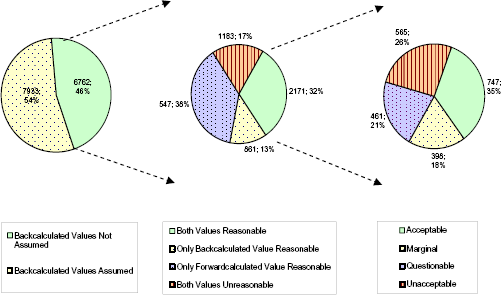

The figures which the contractor needs to report to HMRC are as follows:
#When backcalculation is not full#
They will therefore recharge the full cost including VAT to the contractor. Note that as the subcontractor is not VAT registered they can’t reclaim the VAT back on the materials. Let us assume that the subcontractor in the above example was not VAT registered. CIS calculation example for a subcontractor who is not VAT registered The contractor would therefore pay £100 to HMRC and the subcontractor £740. This then gives the £100 CIS tax to deduct. Giving a figure of £500 which is then multiplied by the CIS tax rate of 20%. Qualifying materials – £200 – this is the qualifying materials per the invoice not including VAT.ĬIS tax to deduct – £100 – This is calculated as the gross amount of £700 less the materials of £200. Gross amount – £700 – this is the total amount invoiced not including VAT. The figures, which the contractor needs to report to HMRC are therefore as follows: The contractor has received the following invoice from the subcontractor:
#When backcalculation is not verification#
See our blog CIS subcontractor verification for more information on this. In this example the contractor has already verified the subcontractor and the CIS tax rate to deduct is 20%. CIS calculation example for a VAT registered subcontractor Then the contractor calculates the tax to deduct by applying the CIS tax rate to the labour amount. This is a big topic on CIS so we have wrote a blog CIS materials, which covers this in much more detail.ĬIS tax to deduct – The contractor deducts the qualifying materials from the gross amount, which gives a labour amount.

For example a decorating subcontractor would recharge the paint they have purchased. Qualifying materials – The qualifying materials are the costs, which the subcontractor has incurred. If the subcontractor is VAT registered the contractor would therefore exclude VAT from the total. Gross amount – The gross amount is the total invoiced. These 3 pieces of information are what is filed with HMRC. The contractor needs to calculate the gross amount, the qualifying materials and the tax to deduct. Gross amount, qualifying materials and CIS tax to deduct The following CIS calculation example is where the subcontractor is both CIS and VAT registered.įollowing this we then have a CIS calculation example, where the subcontractor is not VAT registered. This paper presents the variational derivation of the stress formulation, illustrates the method, examines attributes and benefits, and outlines the future course of research.In this blog we have a couple of CIS calculation examples.

Elasticity solutions must be verified for the compliance of the new equation because the boundary compatibility conditions expressed in terms of displacement are not trivially satisfied. This Completed Beltrami-Michell Formulation (CBMF) can be specialized to derive the traditional methods, but the reverse is not possible.

Augmentation of these conditions has completed the stress formulation in elasticity, opening up a way for a direct determination of stress without the intermediate step of calculating the displacement or the stress function. We have addressed the compatibility on the boundary. Stress with traditional methods must be recovered by backcalculation: differentiating either the displacement or the stress function. Because of this deficiency, a direct stress formulation could not be developed. Saint Venant overlooked the compatibility on the boundary. However, unlike Cauchy, who addressed equilibrium in the field and on the boundary, the strain formulation was confined only to the field. It was deemed complete when Saint Venant provided the strain formulation in 1860. Stress Formulation in Three-Dimensional Elasticity The theory of elasticity evolved over centuries through the contributions of eminent scientists like Cauchy, Navier, Hooke Saint Venant, and others.


 0 kommentar(er)
0 kommentar(er)
